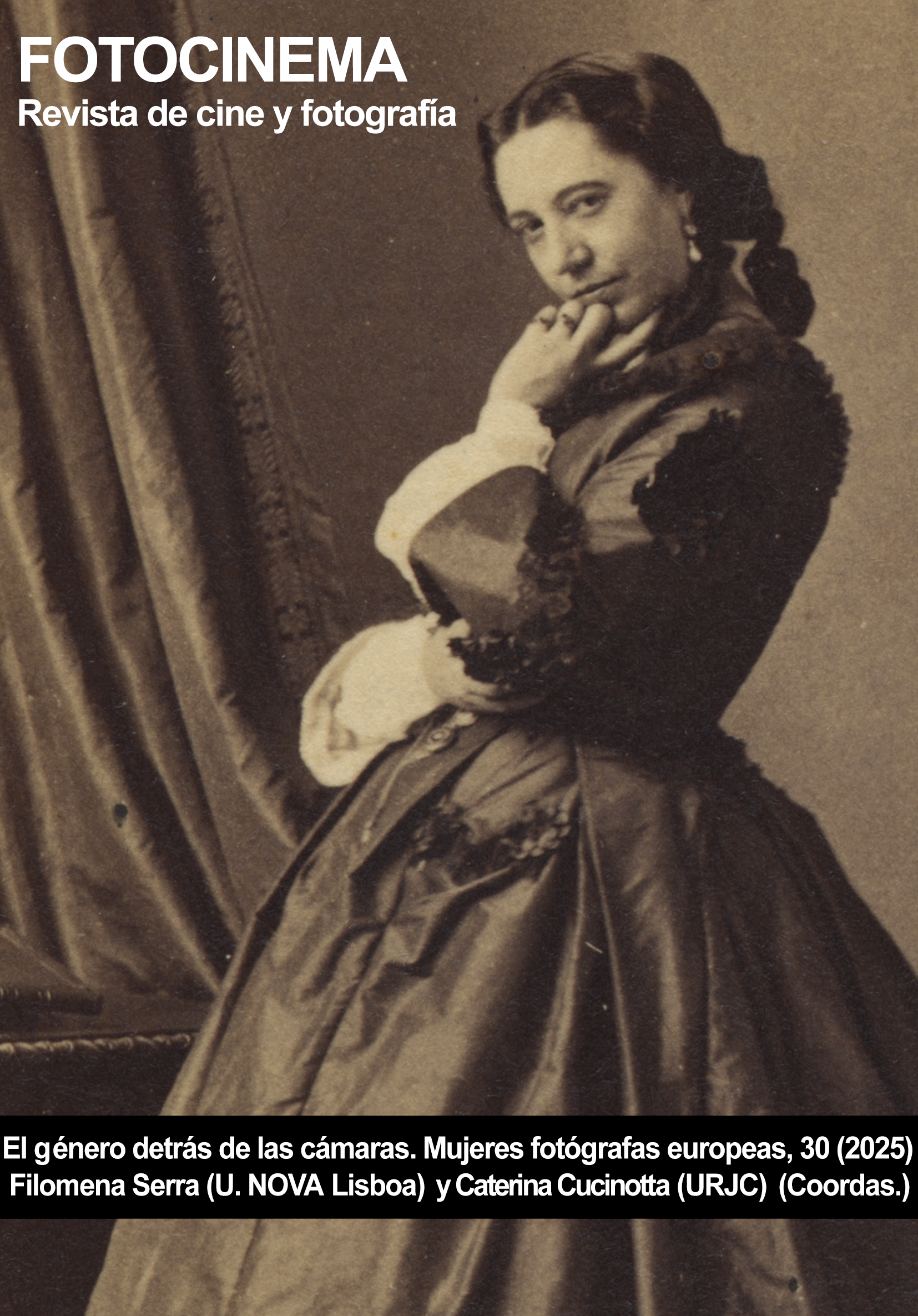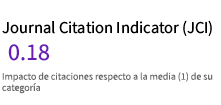LETIZIA BATTAGLIA BRAVE, PACIENT AND SILENCED FOR DECADES HEROIN OF THE MAGIC LENS
DOI:
https://doi.org/10.24310/fotocinema.30.2025.20555Abstract
Flaiano (Pescara, 1910-Rome, 1972) screenwriter and film critic - La Dolce Vita (Fellini, 1960) - wrote: ‘in thirty years’ time, Italy will not be how the governments will have made it, but how television will have made it. In this country that I love, there is simply no such thing as truth. Other countries have one truth. We have infinite versions’.
Flaiano's reflection makes sense in the light of the circumstances that have determined the way Italians have perceived and constructed reality in recent decades. Battaglia, a woman, a press photographer, a lucid observer of a society rotten to the core by organised crime in the city where she was born, and where she gave visual testimony of the consequences of confronting the Mafia, intuited almost from the beginning of her work the perverse effects of the Mafia on all the aspects that governed the lives of millions of women and men in a world of closed, patriarchal, conservative structures, anchored in traditions and codes that were imperceptible, if not unknown to outsiders. It did not take her long to understand that the fight against the Mafia depended not only on denouncing its actions, but above all on a thorough understanding of how it had permeated and moulded the mentality of institutions, families, individuals, of how Italians had come to assume a distortion of a reality that did not define them in their origins. She knew what had to be shown in order to begin to unmask and banish from consciences the ineffability of a phenomenon whose success always depended as much on fear as on the appropriation of consciences.
Downloads
Metrics
Publication Facts
Reviewer profiles N/A
Author statements
Indexed in
-
—
- Academic society
- N/A
- Publisher
- Universidad de Málaga
References
Amato, C. y Maggi, L. (7 de diciembre de 2019). Orizzonti. Spazio Tempo School. https://www.scuolaspaziotempo.it/orizzonti/orizzonti-70-letizia-battaglia/
Anderson, L. (Director). (1968). If... [Película]. Paramount Pictures.
Andreasson, K. (20 de febrero de 2014). La mejor fotografía de Letizia Battaglia: víctimas de asesinatos de la mafia en Palermo. The Guardian. https://www.theguardian.com/artanddesign/2014/feb/20/letizia-battaglia-best-photograph-mafia
Baldó, L. (13 de abril de 2023). Letizia Battaglia: vivir y morir por amor. Palabras inmortales a un año de la muerte de la gran fotógrafa palermitana. Antimafia Duemila. https://www.antimafiaduemila.com/home/mafie-news/309-topnews/94837-letizia-battaglia-vivere-e-morire-per-amore.html
Blanco Pérez, M. (2022b). El discurso fotográfico en los premios World Press Photo (1955-2021): tecnología, política y medios. Revista Latina de Comunicación Social, (80), 241–258. https://doi.org/10.4185/RLCS-2022-154
Blanco Pérez, M. (2020b). Estética y contexto de los audiovisuales sobre narcotráfico en Latinoamérica en la era Netflix. Confluenze. Rivista Di Studi Iberoamericani, 12(1), 102–118. https://doi.org/10.6092/issn.2036-0967/11334
Bourdieu, P. (2003). Un arte medio: Ensayo sobre los usos sociales de la fotografía. Editorial GG.
Brandt, J. P. (2024). Repensar narrativas fotográficas: reflexiones historiográficas sobre Magnum Photos y el legado de Sergio Larraín. Fotocinema. Revista científica de cine y fotografía, (28), 245–268. https://doi.org/10.24310/fotocinema.28.2024.17685
Cartier-Bresson, H (1981). The Decisive Moment. En V. Goldberg (ed.), Photography in Print, Writings from 1876 to the Present (pp. 117-134). Simon & Schuster.
Colorado Nates, Ó. (2 de febrero de 2013). La fotografía humanista. Óscar en Fotos. https://oscarenfotos.com/tag/letizia-battaglia/
Day, H. (25 de noviembre de 2023). Carta con amenazas contra Letizia Battaglia. BBC Cultura. https://www.bbc.com/mundo/articles/cqlge35735po
Dickie, J. (2016). Historia de la mafia. Debate.
Donofrio, A. y Rubio Moraga, Á. L. (2023). Roma ciudad abierta: el neorrealismo y la representación del miedo y el heroísmo en la Italia de la posguerra. Fotocinema. Revista científica de cine y fotografía, (26), 329–353. https://doi.org/10.24310/Fotocinema.2023.vi26.15570
Domínguez, Í. (23 de febrero de 2024). Letizia Battaglia: Para los mafiosos era humillante que una mujer les fotografiara con las esposas puestas. Jot Down. https://www.jotdown.es/2024/02/letizia-battaglia-para-los-mafiosos-era-humillante-que-una-mujer-les-fotografiara-con-las-esposas-puestas
El Niño de la Sociedad. (25 de abril de 2022). Letizia Battaglia: la fotógrafa de los crímenes de la mafia y luchadora por la justicia. Sott.net. https://es.sott.net/article/48911-Letizia-Battaglia-la-fotografa-de-los-crimenes-de-la-mafia-y-luchadora-por-la-justicia
Fasulo, S. (2019). Picchì idda. En S. Di Nasso (Ed.), Inserto culturale di informazione sulle tematiche affrontate dalla Fondazione Laviosa (Núm. 2, pp. 1-30). Fondazione Laviosa. https://fondazionelaviosa.com/wp-content/uploads/LI_n2.pdf
Fondazione MAXXI. (s. f.). Letizia Battaglia. Solo por pasión. MAXXI. https://www.maxxi.art/en/events/letizia-battaglia-per-pura-passione/
Fontcuberta, J. (2020). La furia de las imágenes: Notas sobre la postfotografía. Galaxia Gutenberg.
Gentile, B. (2009). Viaje en la escritura de las imágenes de Letizia Battaglia. Fotografiar es como escribir, con las imágenes en lugar de las palabras. Las Revolucionarias: Literatura e insumisión femenina, 263-278. https://www.academia.edu/19599020/Viaje_en_la_escritura_de_las_im%C3%A1genes_de_Letizia_Battaglia_Fotografiar_es_como_escribir_con_las_im%C3%A1genes_en_lugar_de_las_palabras
Historiando ficción. (29 de junio de 2020). Los años de plomo: La Segunda Guerra de la Mafia y los “cadáveres excelentes”. HisTurismo. https://histurismo19.wordpress.com/2020/06/29/los-anos-de-plomo-la-segunda-guerra-de-la-mafia-y-los-cadaveres-excelentes
John, S. y Sparapani, G. (2022). Messe a fuoco. Storie e battaglie di 40 donne fotografe. goWare.
Lombardo, E. (16 de noviembre de 2017). Letizia Battaglia: Sarà un'agorà per coltivare nuovi talenti. La Repubblica Palermo. https://palermo.repubblica.it/cronaca/2017/11/16/news/letizia_battaglia_sara_un_agora_per_coltivare_nuovi_talenti_-181269978/
Mancini, M. (28 de enero de 2023). Letizia Battaglia: La mujer de la cámara. El fotoperiodista militante y humanista. Medium. https://marioxmancini.medium.com/letizia-battaglia-la-donna-con-la-macchina-fotografica-81514e7a4762
Martínez, G. (10 de mayo de 2011). Entrevista con la fotógrafa Shobha Battaglia, creadora de Mother India School. Mirando a través de una lente. https://mirandoatravesdeunalente.com/2011/05/10/entrevista-con-la-fotografa-shobha-battaglia-creadora-de-mother-india-school/
Meer. (12 de diciembre de 2016). Letizia Battaglia: Per pura passione. Meer. https://www.meer.com/it/22187-letizia-battaglia-per-pura-passione
Miglierini, J. (27 de octubre de 2016). Letizia Battaglia, la mujer que fotografió como nadie la violencia de la mafia en Italia. BBC News Mundo. https://www.bbc.com/mundo/noticias-internacional-37787784
Nadeau, B. L. (6 de mayo de 2016). La mafia no es como “Los Soprano”, es como ISIS, dice un fotógrafo cruzado. CNN. https://edition.cnn.com/2016/05/06/europe/cnnphotos-italy-mafia-letizia-battaglia/index.html
Orosz, D. (2 de junio de 2024). La fotógrafa de la mafia. Letizia Battaglia, imágenes de amor, de locura y de muerte. La Voz. https://www.lavoz.com.ar/cultura/letizia-battaglia-imagenes-de-amor-de-locura-y-de-muerte/
Parejo, N. (2008). El espectador en la imagen fotográfica versus el spectator. Doxa Comunicación, 6, 139-162. https://www.researchgate.net/publication/330457389_El_espectador_en_la_imagen_fotografica_versus_el_spectator
Ranzani, P. (14 de abril de 2022). Homenaje a Letizia Battaglia. Sobre las heridas de sus sueños. Phocus Magazine. https://www.phocusmagazine.it/omaggio-a-letizia-battaglia-sulle-ferite-dei-suoi-sogni/
Rodríguez, V. y Fortuna, C. (2023). La calle, territorio (post) fotográfico. Bitácora Arquitectura, (52), 90–102. https://doi.org/10.22201/fa.14058901p.2023.52.87273
Sanmoran, C. (7 de agosto de 2017). Letizia Battaglia, la fotógrafa que más se acercó a la mafia italiana. Xataka. https://www.xatakafoto.com/fotografos/letizia-battaglia-la-fotografa-que-mas-se-acerco-a-la-mafia-italiana
Sanviti, O. (Trad.). (23 de septiembre de 2013). Mafia, Dead Bodies and Photography – Students Interview Letizia Battaglia (2001). American Suburb X. https://americansuburbx.com/2013/09/interview-letizia-battaglia-students.html
Sweigart, A. (23 de diciembre de 2016). Press release: Letizia Battaglia’s Just For Passion. Street Hunters. https://www.streethunters.net/blog/2016/12/23/press-release-letizia-battaglias-just-for-passion/
Urrutia Neno, C. e Ide Guzmán, C. (2022). Juventudes urbanas: ciudad, cuerpo, virtualidad en el cine latinoamericano (Chile, Argentina y México). Fotocinema. Revista científica de cine y fotografía, (24), 85–105. Recuperado a partir de https://revistas.uma.es/index.php/fotocinema/article/view/14158
Velarde Arriola, A. (13 de enero de 2015). Letizia Battaglia, la fotógrafa de la mafia. Maestros de la Fotografía. https://maestrosdelafotografia.wordpress.com/2015/01/13/letizia-battaglia-la-fotografa-de-la-mafia/
Downloads
Published
How to Cite
Issue
Section
License
Copyright (c) 2025 M Pilar Yébenes Cortés, Nieves Álvarez

This work is licensed under a Creative Commons Attribution-NonCommercial-NoDerivatives 4.0 International License.
All contents published in Fotocinema Revista científica de cine y fotografía are protected under the Creative Commons Attribution-NonCommercial-ShareAlike 4.0 International (CC BY-NC-SA 4.0) license. All about this license is available in the following link: <http://creativecommons.org/licenses/by-nc-sa/4.0>
Users can copy, use, redistribute, share and exhibit publicly as long as:
- The original source and authorship of the material are cited (Journal, Publisher and URL of the work).
- It is not used for comercial purposes.
- The existence of the license and its especifications are mentioned.
There are two sets of authors’ rights: moral and property rights. Moral rights are perpetual prerogatives, unrenounceable, not-transferable, unalienable, imprescriptible and inembargable. According to authors’ rights legislation, Fotocinema. Revista científica de cine y fotografía recognizes and respects authors moral rights, as well as the ownership of property rights, which will be transferred to University of Malaga in open access. The property rights are referred to the benefits that are gained by the use or the dissemination of works. Fotocinema. Revista científica de cine y fotografía is published in an open access form and it is exclusively licenced by any means for doing or authorising distribution, dissemination, reproduction, , adaptation, translation or arrangement of works.
Authors are responsable for obtaining the necessary permission to use copyrighted images.














13.png)



